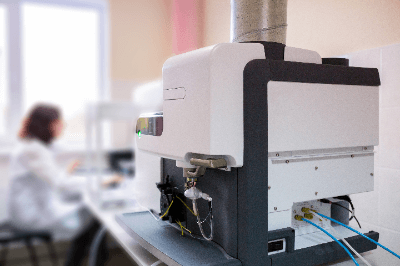What Is a Spectroscopic Analyzer?

A spectroscopic analyzer is a versatile analytical instrument used to examine the spectrum of light emitted or absorbed by substances. These devices typically consist of a light source, a spectroscopic section, a sample section, and a detector.
Spectroscopic analyzers are categorized based on their light source and operational mechanism. Notable types include ultraviolet-visible spectrophotometers (UV-Vis), infrared spectrophotometers (IR), inductively coupled plasma atomic emission spectrometers (ICP-AES), atomic absorption spectrometers (AAS), fluorescent X-ray spectrometers (XRF), and X-ray photoelectron spectrometers (XPS). Each instrument serves specific analytical purposes due to its distinct capabilities.
These analyzers are indispensable tools for both qualitative and quantitative analysis of samples in various fields, including research, quality control, and chemical analysis.
Types of Spectroscopic Analyzers
Spectroscopic analyzers can detect the light emitted or absorbed by substances, enabling a wide range of analyses. Here are six representative types of spectroscopic analyzers:
1. Ultraviolet-Visible Spectrophotometer (UV-Vis)
This instrument utilizes ultraviolet or visible light sources to examine light transmitted through or reflected from a material. It facilitates qualitative and quantitative analysis of sample components.
2. Infrared Spectrophotometer (IR)
IR spectrophotometers employ infrared light sources to study light transmitted through or reflected from materials. They are used to estimate molecular structures and perform quantitative analysis of sample components.
3. Inductively Coupled Plasma Atomic Emission Spectrometer (ICP-AES)
This device detects luminescence generated when a sample is introduced into an inductively coupled plasma. It offers exceptional sensitivity and is ideal for qualitative and quantitative analysis of trace elements.
4. Atomic Absorption Spectrometer (AAS)
AAS instruments perform qualitative and quantitative analysis of trace elements by measuring the absorption of specific wavelengths of light by atoms.
5. X-Ray Fluorescence Analyzer (XRF)
XRF analyzers conduct elemental analysis of materials using X-rays as the light source. They identify qualitative and quantitative characteristics by observing the fluorescent X-rays specific to each element.
6. X-Ray Photoelectron Spectrometer (XPS)
XPS devices employ soft X-rays as the light source to gather information about the atoms and molecules on the surface of a solid material.
Spectroscopic Analysis
Spectroscopic analysis involves the examination of a substance’s properties by shining light on it and observing its response to the light. The fundamental principle behind this analysis is that materials interact with light in specific ways, allowing us to gather information about them.
For instance, when light illuminates a substance, it can be absorbed, reflected, or emitted at specific wavelengths. Spectrometers are designed to capture and analyze these interactions. By studying the resulting data, various types of information can be extracted, including qualitative and quantitative analysis of samples, molecular structure evaluation, and material property assessment.
The key examples include:
- The evaluation of the electronic states of molecules using ultraviolet and visible wavelengths.
- The determination of atomic and molecular arrangements on the surface of solids using X-ray spectra.
- The analysis of vibrational states between atoms in organic compounds through infrared spectra.
Spectrum in Spectroscopic Analysis
In spectroscopic analysis, the spectrum is a crucial element that provides material information. It is obtained by recording the light intensity at various wavelengths using a spectrometer. The resulting spectrum consists of peaks and troughs, each with a specific meaning depending on the type of spectrometer used.
1. UV-Visible Spectrophotometer
The spectrum often appears as a mountain-shaped curve, with peaks indicating the wavelengths at which electrons enter excited states.
2. Infrared Spectrophotometer
The infrared spectrum can exhibit both broad peaks and sharp lines. The presence of specific peaks reveals the vibrations between atoms in organic compounds.
3. Inductively Coupled Plasma Emission Spectrometer
This instrument detects luminescence emitted when a sample is exposed to inductively coupled plasma. The emitted energy, converted to wavelengths, appears as peaks in the spectrum.
4. Atomic Absorption Spectrometer
Atomic absorption spectrometers identify specific wavelengths of light absorbed by atoms in primarily inorganic substances. These absorbed wavelengths are evident as peaks in the spectrum.
5. X-Ray Fluorescence Analyzer
Similar to luminescence, XRF analyzers record the wavelengths of fluorescent X-rays emitted when electrons return to their ground state following X-ray irradiation, representing peaks in the spectrum.
6. X-Ray Photoelectron Spectrometer
XPS instruments utilize soft X-rays to ionize atoms or molecules on a solid surface, and the emitted electrons’ energy is detected as peaks in the spectrum.